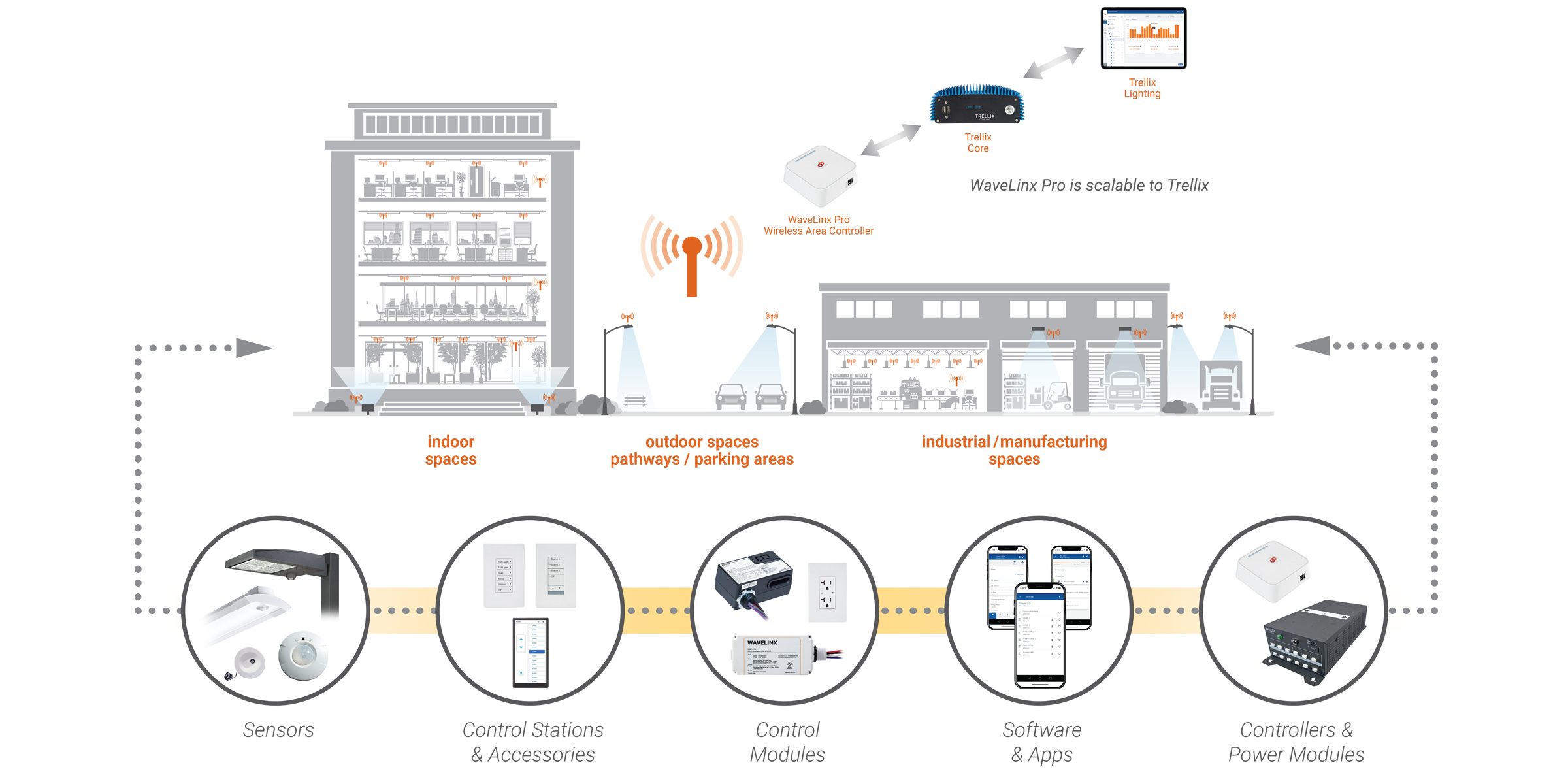LIGHTING CONTROL SYSTEM
Lighting control is the range of smart lighting devices that regulates the quality of light in defined spaces with the integration of IOTs and sensors. It is standalone control of lights within occupied spaces and this may include
- Touchscreen
- Light switches
- Occupancy sensors
- Photocel

TYPES OF LIGHTING
- Ambient lighting
- Task lighting
- Accent lighting
- Decorative lighting
AMBIENT LIGHTING
Ambient lighting is general lighting that is used to light up the room and it is the basic foundation of lighting.
TASK LIGHTING
Task lighting is based on the task that we do or is useful for activities like reading, cooking, studying, and watching movies.
ACCENT LIGHTING
Accent lighting is used to highlight specific features in a room and draw attention to features such as artwork, plants, etc.
DECARATIVE LIGHTING
It is used to decorate rooms with wall strip lights, colorful lights for parties, hanging lights, and fountain lights.
TYPES OF LIGHTING CONTROL SYSTEM
- Basic lighting control system
- Integrated lighting control system
- Assisted lighting control system
- Motion sensor lighting control system
- Occupancy sensors lighting control system
- Dimming lighting control system
- Daylight sensing lighting control system
- Programmable logic lighting control system
BASIC LIGHTING CONTROL
Basic lighting control is a fundamental lighting system that is used to on/off the lights manually whenever needed. In this, we can add the smart switch, and by that one click for on and double click for off, these types of functions are carried out by the basic lighting control.
INTEGRATED LIGHTING CONTROL
In integrated lighting control the lighting control is integrated either into wired automation or wireless automation. This means of integrating with the automation system the lighting can be controlled with mobile devices.
ASSISTED LIGHTING CONTROL
In assisted lighting control certain apps like Alexa voice control or Google voice control are used to control the lights.
MOTION SENSING LIGHTING
Motion lighting control which is used to turn on the light if there is any motion. These systems are mainly used in staircase controllers when we climb the stairs it automatically on the lights by sequentially one by one or whole lights according to the needs in the bathroom, a PIR sensor is used, and if we open the bathroom door it senses the movements and turns on the lights. The timing of lights can be adjusted to certain times if the sensor didn’t detect any movements for that particular time it turns off the lights.
OCCUPANCY SENSORS LIGHTING CONTROL
An occupancy sensor is an indoor motion-detecting device used to automatically control the lighting systems. The sensor use infrared, ultrasonic, and microwave technology. The term encompasses devices as different as PIR sensors, Hotel room key cards, and smart meters. Occupancy sensors are typically used to save energy, and provide automatic lighting control.
DIMMING LIGHTING CONTROL
Dimming lighting control is one of the most used lighting systems. By this, the brightness of lights is adjusted or controlled by dimmable drivers. So no need to off particular lights for energy saving and the required light, the rightness of light can be changed with mobile devices with dimming lighting control.
PROGRAMMABLE LOGIC LIGHTING CONTROL
Programmable logic lighting control systems are composed of elements together by using constructs if-then-else statements and by using programmable logic operators.
BENEFITS OF LIGHTING CONTROL SYSTEM
- Reduced energy consumption
- Increased security and improved safety
- Enhanced comfort
- Better lighting
- Mobile control
- Scene selection
- One-button control
